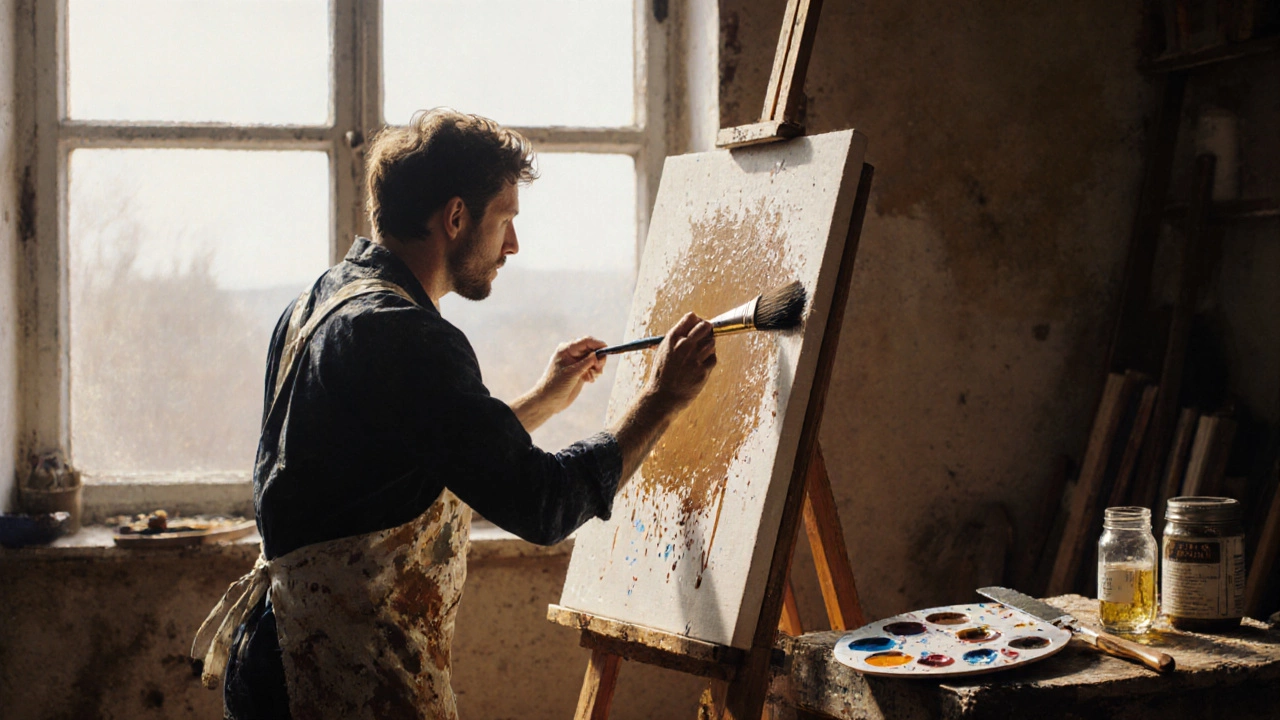Alla Prima Explained: The Direct Wet‑on‑Wet Painting Technique
9 Oct 2025Learn what the alla prima technique is, its history, essential tools, step‑by‑step workflow, pros, cons, and tips for mastering wet‑on‑wet painting.
Continue reading...When working with direct painting technique, a method where paint is applied straight onto the surface without extensive underpainting or glazing. Also known as wet‑on‑wet, it lets artists capture mood and movement in a single, confident layer. This approach encompasses rapid color mixing, bold brushwork, and immediate decision‑making, making it a favorite for both studio experiments and live demonstrations. Because the paint stays wet, artists can blend directly on the canvas, which requires a solid grasp of color theory and a steady hand.
One of the biggest allies of the oil painting, a medium prized for its slow drying time and rich texture is the direct painting technique. Oil’s buttery consistency lets artists blend colors right where they land, so the technique influences the final look of a piece. In a similar vein, watercolor painting, a medium that dries quickly and relies on transparency benefits from a quick, wet‑on‑wet approach, especially for atmospheric skies or soft washes. When it comes to portrait painting, capturing a likeness with depth and personality, the direct technique helps lock in skin tones and light while the model is still present, reducing the need for multiple layers that can stiffen the expression. Landscape artists also love it; the landscape painting, depicts outdoor scenes with emphasis on light, atmosphere, and color harmony often uses direct strokes to render clouds, water, and foliage in one fluid motion, aligning with the rule of thirds and color palette choices you’ll see in our guide on landscape composition. In short, the technique requires confidence, a keen eye for color mixing, and the right tools – a quality brush, a medium that stays workable, and a solid preparatory sketch.
Practical tips roll out as you start: choose a medium that stays wet long enough for blending (slow‑drying oils or a retarder for acrylics), work on a primed surface to control absorption, and keep a limited palette so colors stay harmonious when mixed on the canvas. If a mistake pops up, you can lift the wet paint with a clean rag or a palette knife – the same fix‑it strategy we cover in our article on correcting oil painting errors. For watercolor lovers, laying down a light wash first and then adding richer pigments while still wet mimics the direct approach and saves time. Portrait painters can block in the main values first, then add subtle shifts in hue as the paint remains pliable. Landscape creators often start with a broad sky wash, then push in clouds, trees, and ground in the same session, ensuring the scene feels unified. All of these ideas tie back to the core idea that direct painting is about immediacy, confidence, and letting the medium do the heavy lifting.
Ready to see how these principles play out in real projects? Below you’ll find articles ranging from fixing common oil painting slip‑ups to mastering color palettes for landscapes, plus insider tips on portrait commissions and the rule of thirds for eye‑catching compositions. Dive in, experiment with the technique, and let the brush guide you to faster, fresher results.

Learn what the alla prima technique is, its history, essential tools, step‑by‑step workflow, pros, cons, and tips for mastering wet‑on‑wet painting.
Continue reading...